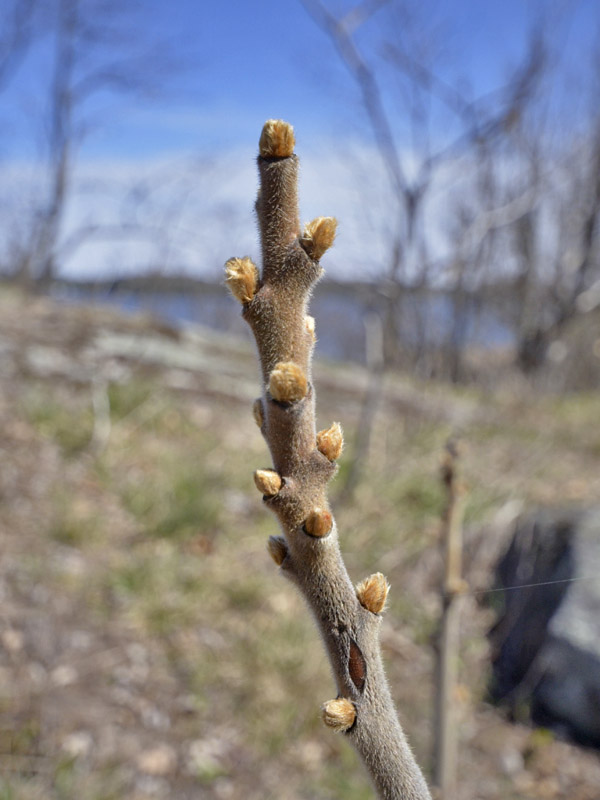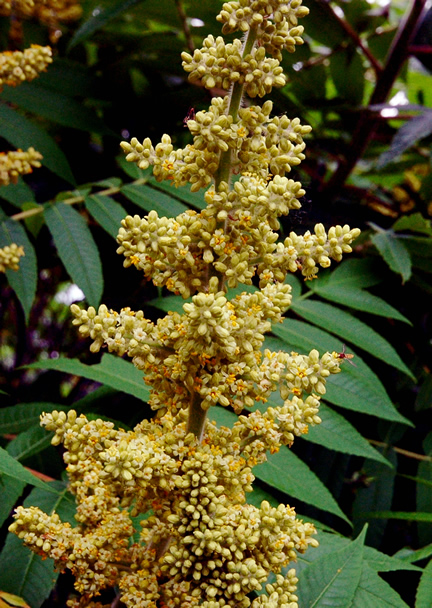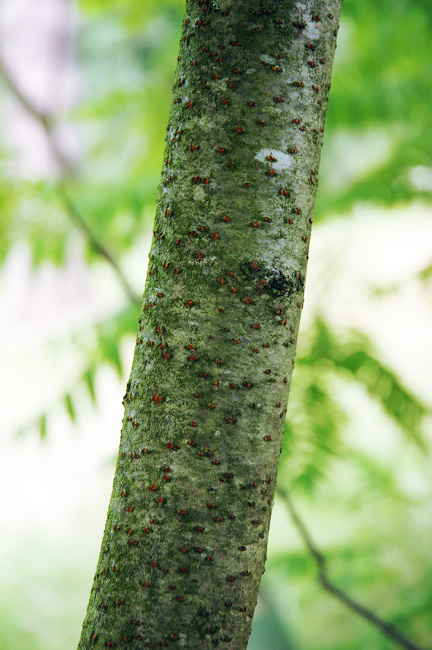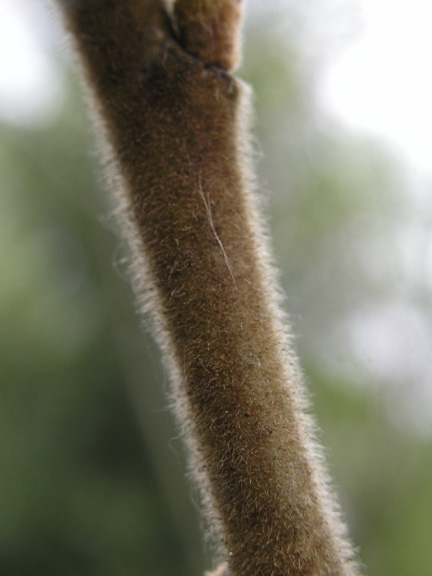
Woody > Rhus > Rhus typhina > Rhus typhina
Rhus typhina
Staghorn Sumac
Mike's
Opinion


"
A native that has use in the cultured as well as the natural environment. The form although stark in winter is interesting with branches topped by the fruit. The autumn colour is spectacular in orange to red. The fruit also makes a refreshing tea on winter hikes when boiled and sugar or honey added; high in vitamin C.
Michael Pascoe, NDP., ODH., CLT., MSc. (Plant Conservation)
"
| Family |
| Anacardiaceae |
| Genus |
| Rhus |
| Species |
| typhina |
| Category |
| Woody |
| Type |
| Tree (deciduous), Shrub (deciduous) |
| Pronunciation |
| USDA Hardiness Zone |
| 4 - 8 |
| Canadian Hardiness Zone |
| 3 |
| RHS Hardiness Zone |
| H7 |
| Height |
| 2.5 m |
| Spread |
| 3 m |
Photographs
Description and Growing Information
Flowering Period
| General Description |
| A native shrub suitable for quick screening and naturalizing. Used as a specimen in contained areas. |
| Landscape |
| Naturalizing, massing, waste areas, perhaps banks, cuts and fills. It is hard to kill this plant due to its ability to sucker freely from the roots. |
| Shape |
| Wide and spreading. |
| Growth |
| Fast |
| ID Characteristic |
| Bright green foliage, crimson fruit clusters, wide spreading and its branches are covered in dense velvet hair. |
| Flower/Leaf Bud Description |
| Hairy, leaf scars are 'C'-shaped. |
| Leaf Description |
| Compound pinnate, alternate and contains 13-27 leaflets. Bright green above, glaucous beneath. |
| Flower Description |
| Dioecious, females borne in dense, hairy panicles and male in a bigger, looser, wider panicle. Greenish-yellow in colour. |
| Fruit Description |
| Densely hairy drupe, closely packed with in a pyramidal panicle. Bright crimson in early autumn, becoming duller and darker red with cold weather and often still colourful even into the spring. |
| Colour Description |
| Bright green in summer, yellow, orange and scarlet in autumn. Flowers are greenish-yellow and fruit is scarlet red. |
| Texture Description |
| Medium in summer and coarse in the winter. |
| Propagation |
| Seed, scarify for 50-80 minutes in sulfuric acid. Root cuttings collected in the autumn and cut into 50 mm lengths, insert vertically into pots or flats barley covering the top. Water and place in a cold frame until growth appears and then pot individually. |



.jpg)

.jpg)